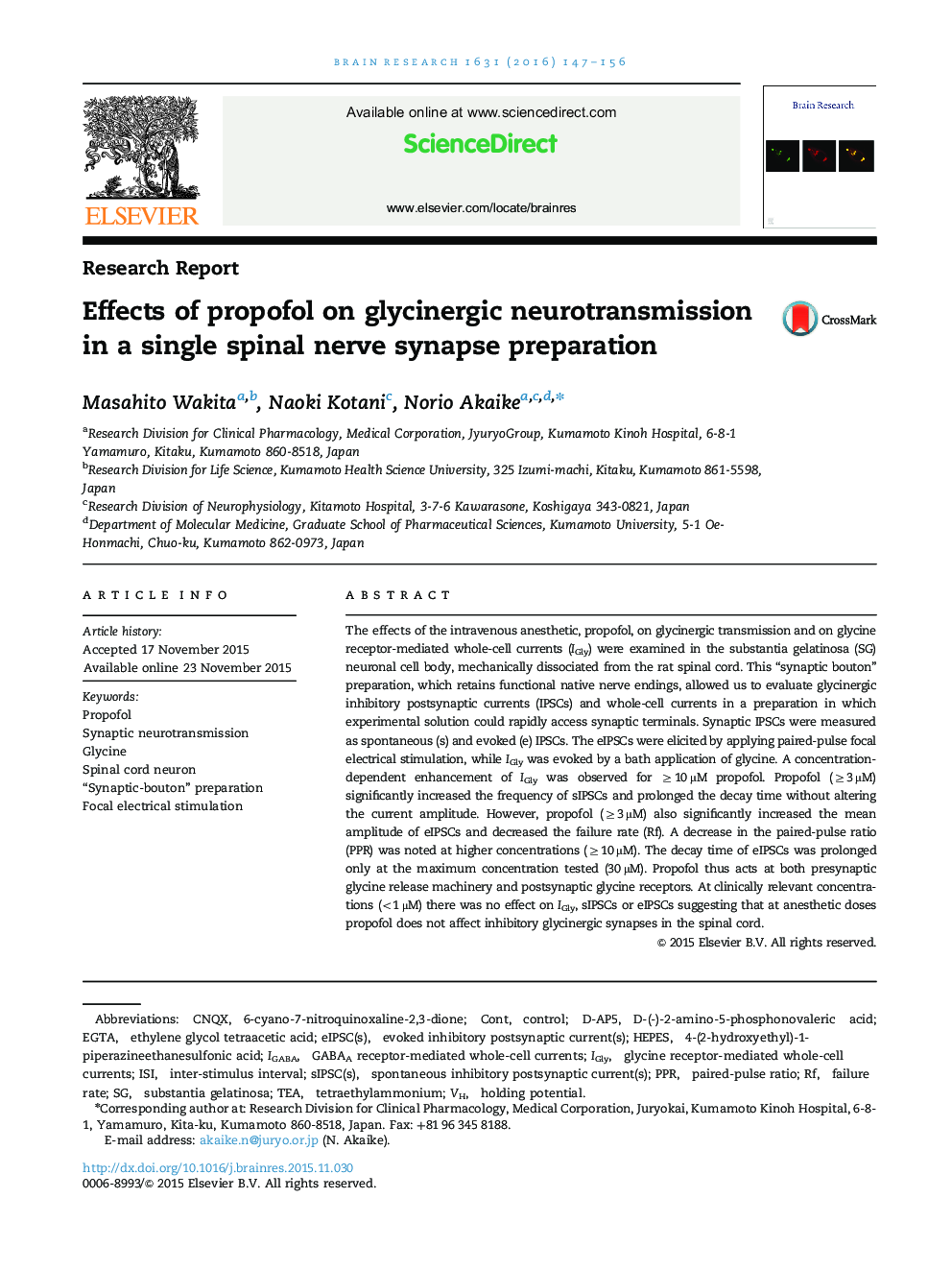| کد مقاله | کد نشریه | سال انتشار | مقاله انگلیسی | نسخه تمام متن |
|---|---|---|---|---|
| 6262612 | 1613809 | 2016 | 10 صفحه PDF | دانلود رایگان |
- Effects of propofol were examined at spinal cord glycinergic synapses.
- Propofol potentiated the glycine receptor-mediated whole-cell responses.
- Propofol increased the spontaneous and action-potential dependent glycine releases.
- The results suggest propofol directly act on pre- and postsynaptic side.
- All effects of propofol were seen at higher than clinically relevant concentrations.
The effects of the intravenous anesthetic, propofol, on glycinergic transmission and on glycine receptor-mediated whole-cell currents (IGly) were examined in the substantia gelatinosa (SG) neuronal cell body, mechanically dissociated from the rat spinal cord. This “synaptic bouton” preparation, which retains functional native nerve endings, allowed us to evaluate glycinergic inhibitory postsynaptic currents (IPSCs) and whole-cell currents in a preparation in which experimental solution could rapidly access synaptic terminals. Synaptic IPSCs were measured as spontaneous (s) and evoked (e) IPSCs. The eIPSCs were elicited by applying paired-pulse focal electrical stimulation, while IGly was evoked by a bath application of glycine. A concentration-dependent enhancement of IGly was observed for â¥10 µM propofol. Propofol (â¥3 µM) significantly increased the frequency of sIPSCs and prolonged the decay time without altering the current amplitude. However, propofol (â¥3 µM) also significantly increased the mean amplitude of eIPSCs and decreased the failure rate (Rf). A decrease in the paired-pulse ratio (PPR) was noted at higher concentrations (â¥10 µM). The decay time of eIPSCs was prolonged only at the maximum concentration tested (30 µM). Propofol thus acts at both presynaptic glycine release machinery and postsynaptic glycine receptors. At clinically relevant concentrations (<1 μM) there was no effect on IGly, sIPSCs or eIPSCs suggesting that at anesthetic doses propofol does not affect inhibitory glycinergic synapses in the spinal cord.
Journal: Brain Research - Volume 1631, 15 January 2016, Pages 147-156
